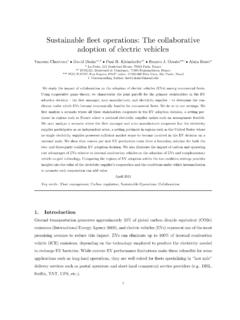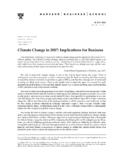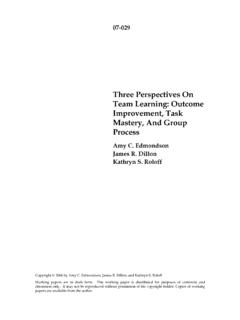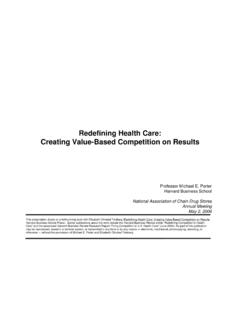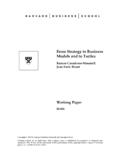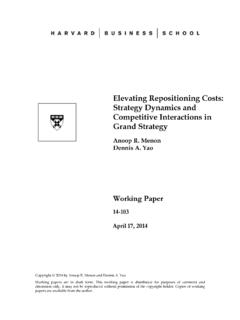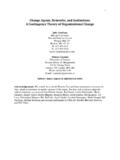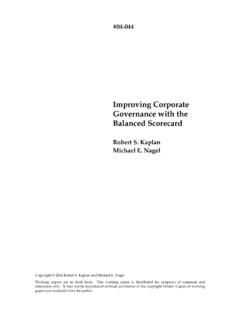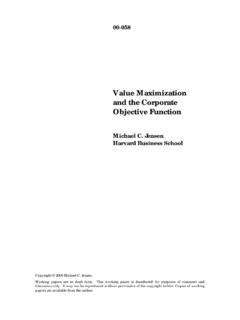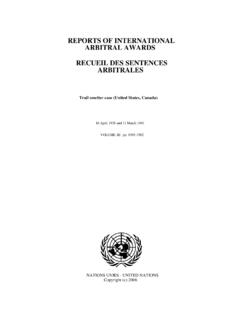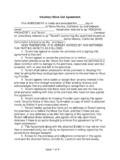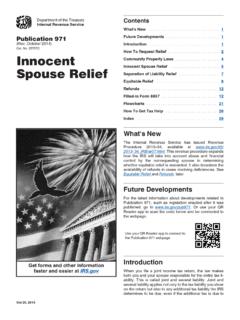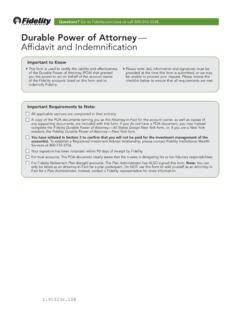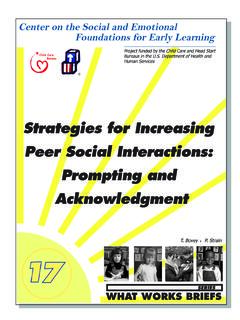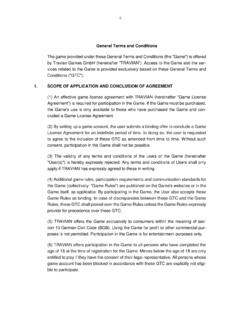Transcription of Hidden Workers: Untapped Talent
1 Hidden WORKERS: Untapped Talent . How leaders can improve hiring practices to uncover missed Talent pools, close skills gaps, and improve diversity Joseph B. Fuller Manjari Raman Eva Sage-Gavin Kristen Hines About the authors Harvard Business School Joseph B. Fuller is a Professor of Management Practice at Harvard Business School. He co-chairs the HBS Project on Managing the Future of Work and is a visiting fellow at the American Enterprise Institute. Manjari Raman is a Program Director and Senior Researcher for Harvard Business School's Project on Managing the Future of Work as well as the Project on Competitiveness. Accenture Eva Sage-Gavin is Senior Managing Director, Talent & Organization/Human Potential at Accenture.
2 She serves as executive in residence at Cornell University's School of Industrial and Labor Relations and on the advisory board for Santa Clara University's Corporate Board Ready program for diverse director candidates. Kristen Hines is a Managing Director for Talent & Organization/Human Potential within Accenture Strategy. Kristen is on Accenture's global leadership team for the CEO Transformation practice and leads the Global Inclusion, Diversity & Equity practice. The authors would like to thank the following individuals from Harvard Business School: Research associates Carl Kreitzberg and Bailey McAfee made substantial and meaningful contributions in literature searches, survey design, data analysis, and fact-checking.
3 We especially recognize the research standards and ethics guidance provided by the late Kile King, Assistant Director for Research Administration and Compliance in the Division of Research and Faculty Development, HBS, while reviewing the global surveys. The authors would like to thank the following individuals from Accenture: Research Leads: Ladan Davarzani and Sarah Berger Project Team: Jonathan Thomas, Sotirios Papoutsis, Steven Flynn, Dominic King, Tchicaya Robertson, Christine Yiannakis, Julia Malinska, Michelle Ganchinho, Courtney Bonanno, Karen Saverino, MaryKate Morley Ryan, Regina Maruca, and Francis Hintermann Special thanks to Barbara Harvey, who led the research project while she was at Accenture.
4 Acknowledgments and disclosures The authors would like to acknowledge funding support for this project from the Division of Research and Faculty Development at HBS and pro-bono, in-kind support and expertise from Accenture. Harvard Business School would like to acknowledge the support of The Tony Tamer (MBA 1986) Research Fund for Managing the Future of Work. The views expressed in this paper are the sole responsibility of the authors and not meant to represent the views of Harvard Business School or Harvard University. Joseph Fuller is a compensated member of Accenture's Luminary Program. Please direct inquiries to: Harvard Business School: Manjari Raman Accenture: Eva Sage-Gavin and Kristen Hines ).
5 Suggested citation: Fuller, J., Raman, M., Sage-Gavin, E., Hines, K., et al (September 2021). Hidden Workers: Untapped Talent . Published by Harvard Business School Project on Managing the Future of Work and Accenture. Report design: Terberg Design LLC. Corrigendum: This report was updated on October 4, 2021 for further accuracy in data shown in four figures. No findings or analysis changed because of the updates. Executive summary 2. The struggle to find Talent 6. Forces reshaping the labor market 8. Shining a light on Hidden workers 13. Hiring Hidden workers: perspectives, paradoxes, and potential 16. What business can do 34. Conclusion 47. Appendix I: Methodology 48. Appendix II: Country comparisons 53.
6 Appendix III: Impact of Covid-19 on Hidden workers 63. Hidden WORKERS: Untapped Talent 1. Executive summary Companies are increasingly desperate Our research revealed that long-standing and widespread management practices contribute for workers. As they continue to significantly to constraining the candidates that struggle to find people with the skills companies will consider, leading to the creation they need, their competitiveness and of a diverse population of aspiring workers growth prospects are put at risk. who are screened out of consideration or Hidden . But it also affirmed that companies At the same time, an enormous and that purposefully hire Hidden workers realize an attractive return on investment (ROI).
7 They growing group of people are unem- report being 36% less likely to face Talent and ployed or underemployed, eager to skills shortages compared to companies that get a job or increase their working do not hire Hidden workers. And they indicate hours. However, they remain effec- former Hidden workers outperform their peers materially on six key evaluative criteria atti- tively Hidden from most businesses tude and work ethic, productivity, quality of that would benefit from hiring them work, engagement, attendance, and innovation. by the very processes those compa- nies use to find Talent . Who are Hidden workers? The irony that companies consistently bemoan In coining the term Hidden workers, we their inability to find Talent while millions remain wanted to hone in on language that reflected on the fringes of the workforce led us to seek the effects that companies' policies, practices, an explanation.
8 How could such a breakdown and deployment of technology have on their in the fundamental laws of supply and demand capacity to identify and access various pools occur? Why do companies consistently over- of Talent . The term Hidden worker is not look large pools of Talent ? What changes would intended to suggest in any way that workers are companies have to make to take advantage of hiding and wish to or actively seek to remain that Talent ? Those became the driving questions excluded from consideration for employment. behind our recent global study, which included Far from it. Our analysis indicates many such a survey of more than 8,000 Hidden workers workers want to work and are actively seeking and more than 2,250 executives across the work.
9 They experience distress and discourage- , the , and Germany. ment when their regular efforts to seek employ- ment consistently fail due to hiring processes Our findings illuminate a situation that has that focus on what they don't have (such as worsened because of the pandemic but has, credentials) rather than the value they can bring in fact, been growing over recent decades. A. (such as capabilities). single data point made the intractability of the problem apparent just under half (44%) of Ultimately, we found that Hidden workers fall middle-skill Hidden workers reported that into three broad categories: missing hours . finding work was just as hard pre-Covid-19 as it (working one or more part-time jobs but willing was during our 2020 survey period.)
10 And able to work full-time); missing from work (unemployed for a long time but seeking 2. employment); or missing from the workforce A Recruiting Management or Marketing (not working and not seeking employment System (RMS) complements the ATS and but willing and able to work under the right supports recruiters in all activities related to circumstances). marketing open positions, sourcing key Talent , creating Talent pools, and automating aspects And critically, we found that they do not repre- of the recruiting process such as automated sent a homogeneous group. They include candidate scoring and interview scheduling. caregivers, veterans, immigrants and refugees, Together, these systems represent the founda- those with physical disabilities, and relocating tion of the hiring process in a majority of organi- partners and spouses.
